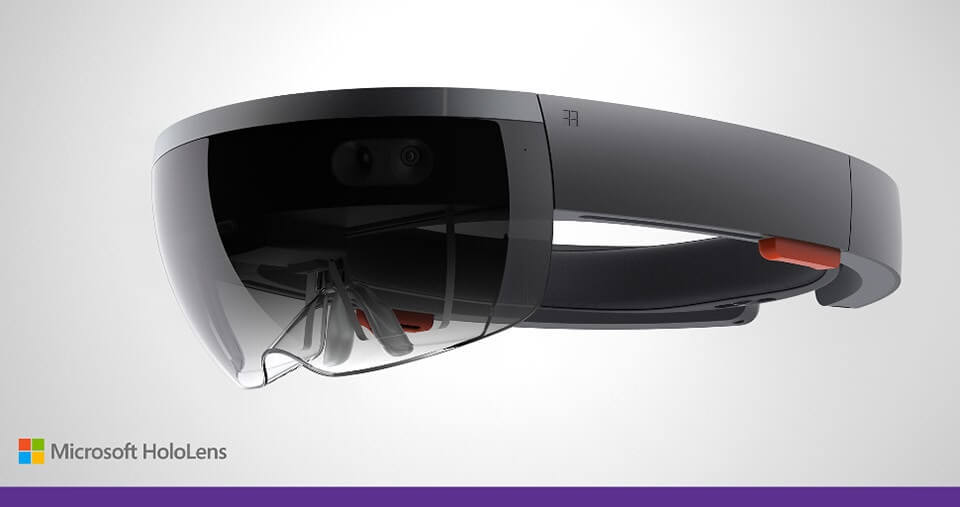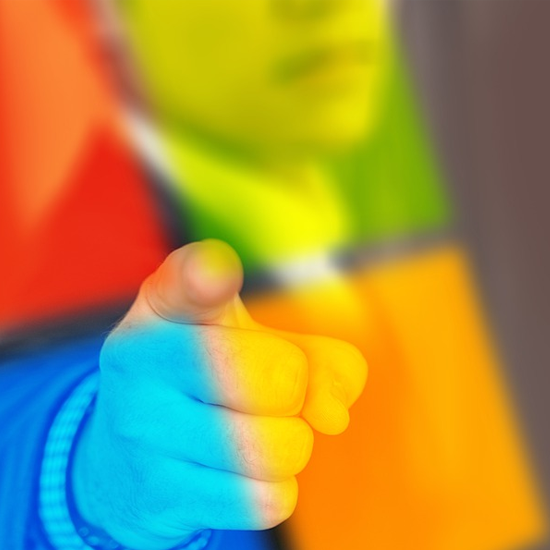On 19th May 2020, Microsoft held its Annual Build meeting. The all-virtual event featured multiple hosts, delivering exciting announcements to the public.
If you missed the event or simply want a digestible summary, look no further. We’ve compiled everything you need to know in this article. Catch up with all the exciting announcements and look forward to what Microsoft has in store.
Fluid Framework in Microsoft 365

(Microsoft)
After teasing since the Build event in 2019, Microsoft has finally shown off the potential of the new Microsoft Fluid framework. This project aims to renovate how Office documents work and how you can work together with others.
You might be asking— what is the Fluid framework? According to Microsoft, Fluid doesn’t essentially change much in Office documents. Instead, it gives you the ability to work better with others. The interactive elements allow you to edit and share blocks for components such as tables, graphs, lists, and so on.
“Imagine you could take (..) Lego pieces and put them in any place you wanted: in emails, in chats, in other apps. As people work on them, they will always be updated and contain the latest information.” explains Jared Spataro, head of Microsoft 365, in an interview with The Verge.
These new features already have people nicknaming Office as the next, better Google Docs. We’ll have to see how the new Fluid framework changes the game in the upcoming months. But here is a sneak peek on what you will be able to achieve with Fluid Framework.
- Fluid Framework Infrastructure is now open source—in your applications— You will be able to use the web-based framework of Fluid to instantly make your apps collaborative. The Framework includes data structures that allow synchronization and relay service to connect endpoints at low-latency. If you replace your static data structures with Fluid data structures, your app instantly supports real-time collaboration.
- The Fluid Framework is on a journey to make work more adaptable and focused. The first Fluid Framework integrations in Microsoft 365, is finally coming to Outlook and Office.com. This will enable businesses to collaborate on dynamic content and create connected components that can be shared simultaneously and seamlessly across apps.
Microsoft Edge

(Microsoft)
Microsoft introduced the new Microsoft Edge browser during the Build conference in 2019. Since then, the improvements that will soon arrive in Edge have only gotten better. Let’s take a look at what’s new.
The performance of Edge continues to get better. Better and faster experience means more productive browsing with Edge. You wouldn’t be able to guess that the browser is related to the infamously slow Internet Explorer at all. The browser now proudly rivals some of the top competitors when it comes to speed.
“Love the new updates. Edge is now my go-to browser. It fulfills all of my browsing needs and I have uninstalled other browsers.” — says a commenter under the What's New from Microsoft Edge announcement.
Microsoft has introduced tools to take your privacy back. With the new Tracking prevention, websites won’t be able to see your browsing data or geolocation at all. Stay safe while browsing without having to locate extra costs to a VPN service.
Organize, save, and share your online life. The Collections tool now allows you to be even more productive with Edge through Pinterest integration. With this comes the sidebar search option. Seamlessly look things up while browsing and saving things to your collections.
Web developers weren’t forgotten either. If you develop with Edge, you’ll certainly enjoy new features such as the new 3D view in DevTools, WebView2 Preview SDKs, and more.
Additionally, you can now save time by using the side-bar search to search for things without having to open a new tab. Even more, if you’re using Edge for personal and business, there’s an option to use Automatic Profile Switch, interesting right?
Microsoft is planning on rolling out the new Edge on all Windows 10 devices, excluding enterprise and education. Expect the update over the course of the upcoming few weeks. Can’t wait? Try the new Edge by downloading it for free.
Microsoft Teams

(Thurrott)
Microsoft Teams has seen a significant increase in use since the wake of COVID-19. Luckily for those who’re working from home, or plan to employ more remote workers in the future, the platform is getting some updates later this year.
Users will soon be able to enjoy personalized suggestions, more relevant apps in the Teams store, and easier access to apps in separate windows. The Bookings app has become generally available in Teams. Organizations can now schedule secure remote meetings and events with ease.
Furthermore, interoperability with Skype TX and NDI support enhances the use of Teams to create online conferences, interviews, and more.
Along with this, Microsoft is also releasing pre-made templates for Teams organizations. Normally, you’d have to set up each team from scratch, which takes a lot of time to do. Soon, you’ll be able to choose from customizable templates depending on the purpose and size of your group.
Here’s what’s new to Microsoft Teams.
- Create teams quickly with customizable templates—When creating a new team, you’ll soon be able to pick from a variety of customizable templates.
- Quickly add custom apps and automated workflows to Teams—Developers and admins will soon be able to add their custom applications from Power Apps to Teams with a single click of the Add to Teams button.
- Share Power BI reports in Teams—Power BI users can now share reports, or specific charts in reports, to Teams with the new Share to Teams button.
- Easily create and manage chatbots in Teams—Integrating with Teams is also easier than ever: Just select the bot you want to use and then click Add to Teams.
- Schedule virtual appointments via Bookings in Teams—Organizations will now be able to schedule, manage, and conduct business-to-consumer virtual appointments through the new Bookings app integration in Microsoft Teams.
- Extend the Shifts app in Teams—New capabilities in the Shifts app extends the functionality and enables integration with existing systems.
Project Cortex

(Microsoft)
Similar to some other updates mentioned in this article, Project Cortex has been announced in 2019 during the Ignite event. However, it’s becoming generally available in the early summer of 2020.
What Project Cortex does is apply powerful artificial intelligence (AI) and Microsoft Graph to put together a knowledge network of your Microsoft 365 content. Organize and manage your information across systems and teams with ease.
Project Cortex streamlines many processes related to finding both internal and external information you need. It also enhances security and compliance controls while bringing automated workflows to all users.
Microsoft Lists coming to Microsoft 365

Microsoft has announced a new exciting addition to the product lineup of Microsoft 365, the new revamped version of Office 365. The app is called Microsoft Lists.
What can you do with Lists? During the announcement, we’ve got a great insight into how far you can go with one simple application. Lists allow you to:
- Create, share, and track data within Microsoft Teams, SharePoint, and the upcoming Lists mobile app.
- Easily track data and information to stay updated with the latest status
- Use custom templates to quickly get started on new lists.
- Get things done - together. You may use Teams to collaborate on lists in an integrated experience.
We can’t wait to get access to Microsoft Lists later this year.
Microsoft Cloud for Healthcare

(Pexels)
The coronavirus crisis has altered the way people work as we practice social distancing and opt to work remotely. Essential workers, especially hospital staff, don’t have the chance to stay at home. However, they have the ability to rely on technology equipment to keep staff and patients as safe as possible.
Microsoft has announced its new software, Microsoft Cloud for Healthcare, designed to help hospitals perform virtual healthcare visits. The public preview became available on May 19th with the full release planned for the fall of this year.
Microsoft HoloLens 2

(Microsoft)
Some new exciting announcements have been made regarding the new Microsoft HoloLens 2.
The augmented reality focused device has been available since the launch last November, although only in specific countries such as the United States. By fall of this year, the device will be available in the Netherlands, Switzerland, Spain, Austria, Sweden, Finland, Norway, Denmark, Belgium, Portugal, Poland, Singapore, South Korea, Hong Kong, and Taiwan.
The update to the headset includes extra voice-control, improved hand tracking, as well as 5G or LTE support with connectable USB dongles.
Although it’s becoming more and more available, the equipment is still intended for business use rather than a way to bring AR to the general public. This means that the costs for a HoloLens 2 still stay at a whopping $3500. According to Microsoft's director of mixed reality, Greg Sullivan, there might be possibilities regarding a cheaper HoloLens in the future.
We hope this summary was able to get you excited for what’s in store from Microsoft. Keep up with all the updates and news about Microsoft’s updates by returning to our website.
If you’re looking to read more articles related to modern technology, consider subscribing to our newsletter. We regularly publish tutorials, news articles, and guides to help you in your day-to-day tech life.
